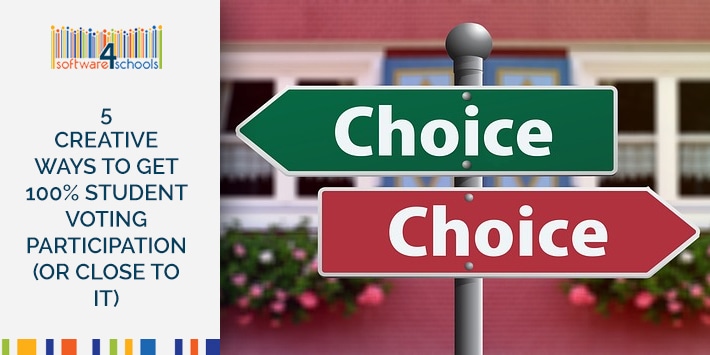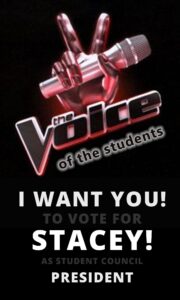
As many parents and teachers know very well, getting young people to do anything is no easy task. This is especially true when you’re trying to convince them to participate in an activity that isn’t mandatory or won’t be graded with consequences.
Taking part in school elections falls into this category. When students don’t take an active part, they lose very important and valuable lessons and socio-civic skills in a school environment that are necessary when they become adults and future contributors to society.
How do you get young people engaged?
This involves maintaining their attention, keeping them focused, and staying visible.
To do this — here are 5 Creative Ways to Get 100% Student Voting Participation (or close to it):
1. Make school elections an activity for building school spirit
School spirit is a way to showcase school pride and loyalty, and fosters a sense of community to everyone in the school, from the administrators, teachers, students, parents, to the non-teaching staff and support departments. Why not make school elections part of school spirit? It’s a novel way of keeping students’ attention and making things fun. Perhaps perform a mock debate on student issues in the style of Cabinet battle in the Hamilton musical, or have fellow colleagues get involved, even the school principal, say in a pep rally for instance. When school elections are included in school spirit events, this demonstrates to everyone in school that elections matter, that it’s part of the overall school experience.
2. Use online polling
During the student campaign/election period, keeping students’ attention throughout this period is key. Early on, why not run polls to determine what issues the student body cares about? It can be a mix of serious to funny stuff so as to keep them interested and engaged — issues like the environment (recycling), food waste, increase school funding for club activities, more beverage options for vending machines, more lunch options at the cafeteria, have one extra day of wearing casual clothes in place of school uniforms — and use the online voting software to quickly find out what’s important to them. Likewise, knowing what these issues are will complement what student candidates speak to their peers during the campaign period.
3. Catchy and funny campaign posters
Another way of keeping students interested during the campaign period, (and help remember the candidate(s) running) is to create catchy, funny, yet effective campaign posters. It may be old-fashioned but posters still help candidates stand out. Some examples can be seen below:



4. Make a campaign video
To complement the campaign posters, why not also make a short campaign video? Check with your school first if they have the resources to share school-wide, like monitors in hallways or in the cafeteria, or if your school can share the video by sharing the link to students. All are brief, some funny, serious, or a combo of both, and their voting peers get a taste of each candidate’s personality and what each is all about. See examples created by students: In this video of a student running for Junior Class President, the student/athlete and candidate speaks from his heart with music in the background; this “explosive” video of a student running for High School President uses explosions to share his point across; and in this student council campaign video, the candidate uses an understated style while encouraging her peers to vote.
5. Delivering an unforgettable student candidate speech
Student candidate speeches still matter because they make or break the candidates’ chances of winning the election. Sometimes when the campaign period is very brief, these speeches, more often than not, will help determine whether the candidates get elected, whether the candidates connect with the voters, and whether the voters like or don’t like the candidates. Some epic speeches can be seen in these examples: Daisy Thomas, a candidate for Sophomore Class Representative for Student Council, uses humor to engage her peers; 8th grade candidate’s speech uses humor effectively; and Zach Oschin’s Speech wherein he doesn’t “speak” at all.
Conclusion
At the end of the day, in order to achieve a successful school election it will take the participation and active involvement of everyone in school, from the administrators, teachers, students, parents, and staff. When everyone is involved, this shows the students that voting and the election process are important and that they matter to all.
So try some or all of these tips on your next school election and you’ll be on your way to get all your students (or almost all) to vote. Rock the vote!
Based in Orange County, CA, Software 4 Schools was founded in 2008 by Ben Star and Michael Buss who were teaching at that time and who wanted to make the school dance’s ticketing run efficiently and record sales and attendance accurately. They developed their own software and hardware and have since branched out to address other tasks that their fellow teachers and school administrators find tedious and take the most time out of their days. Click here for more information.



